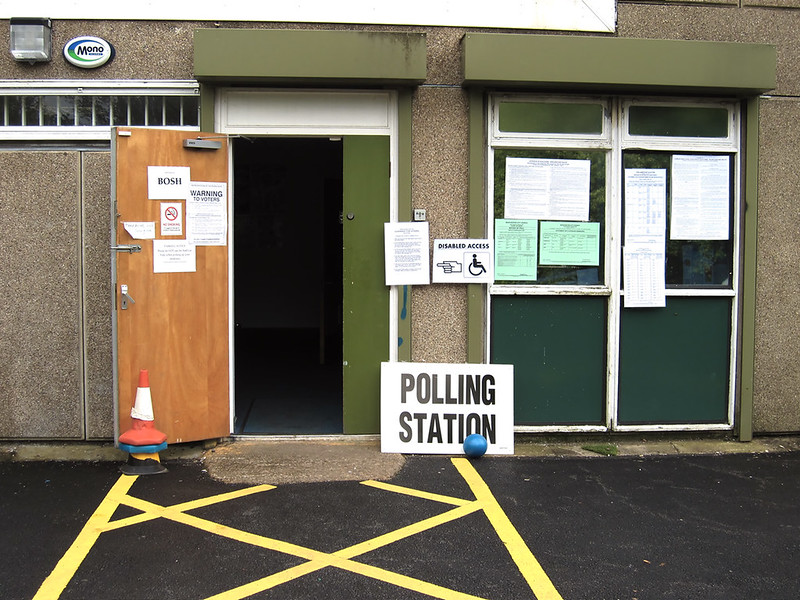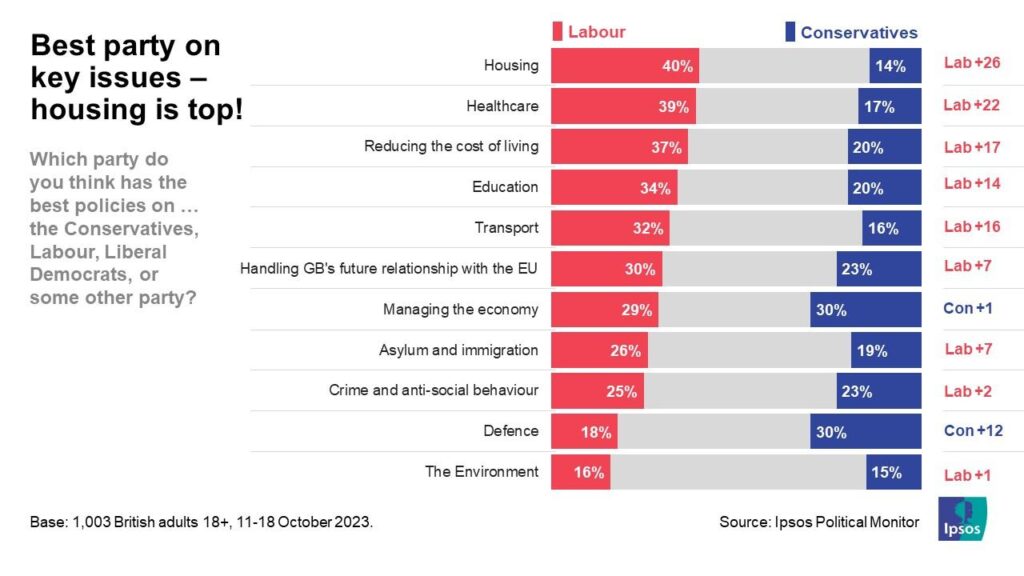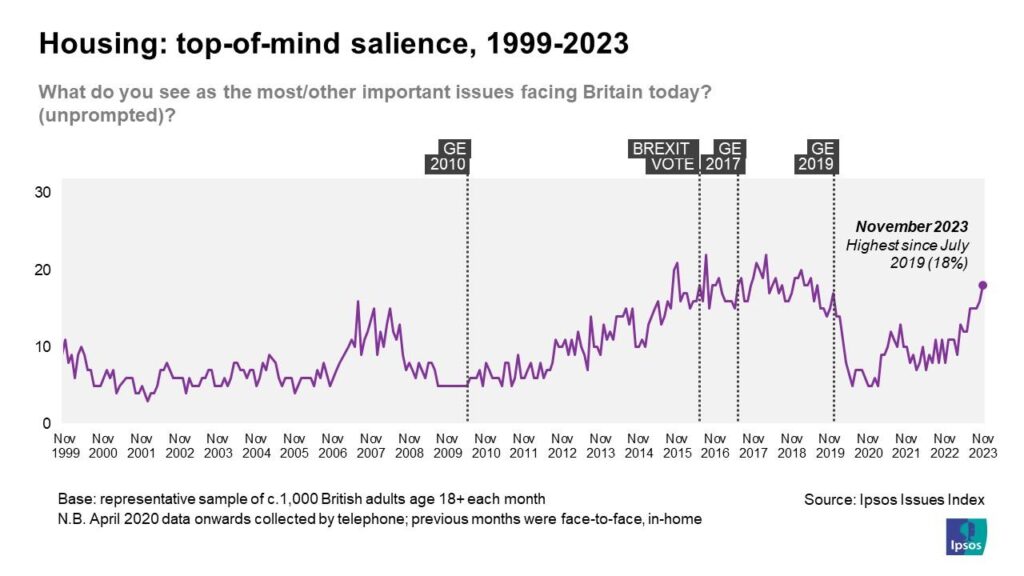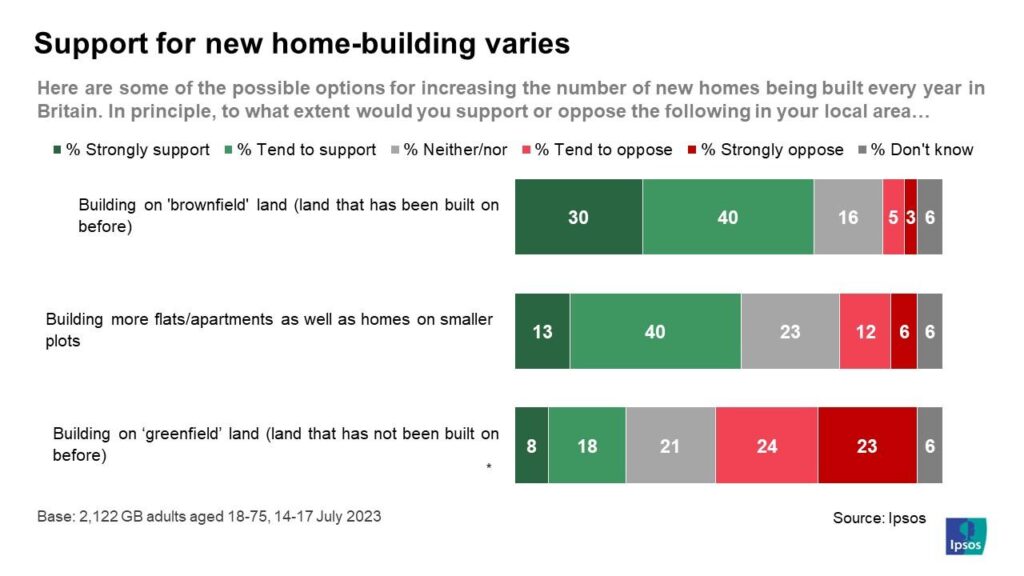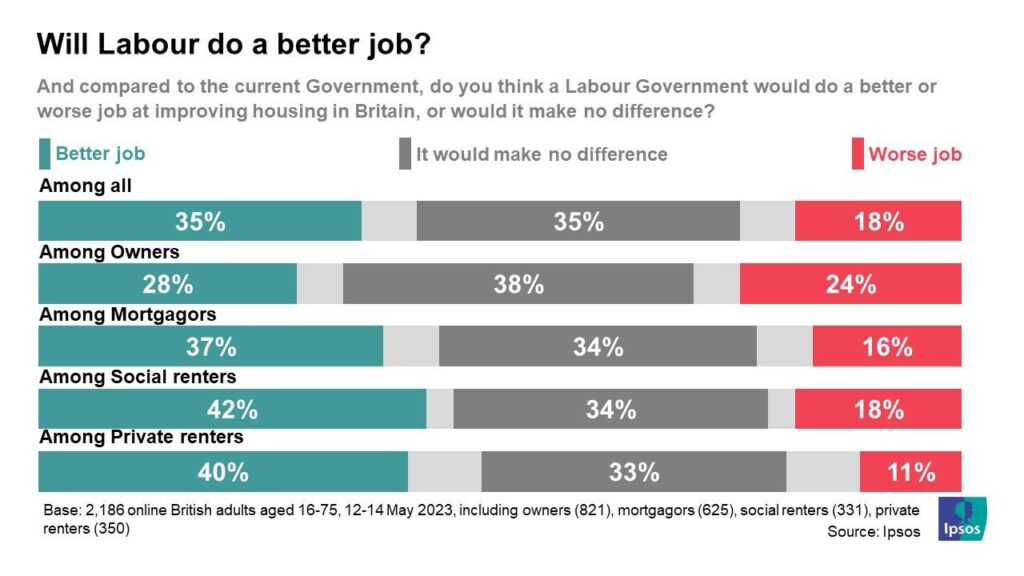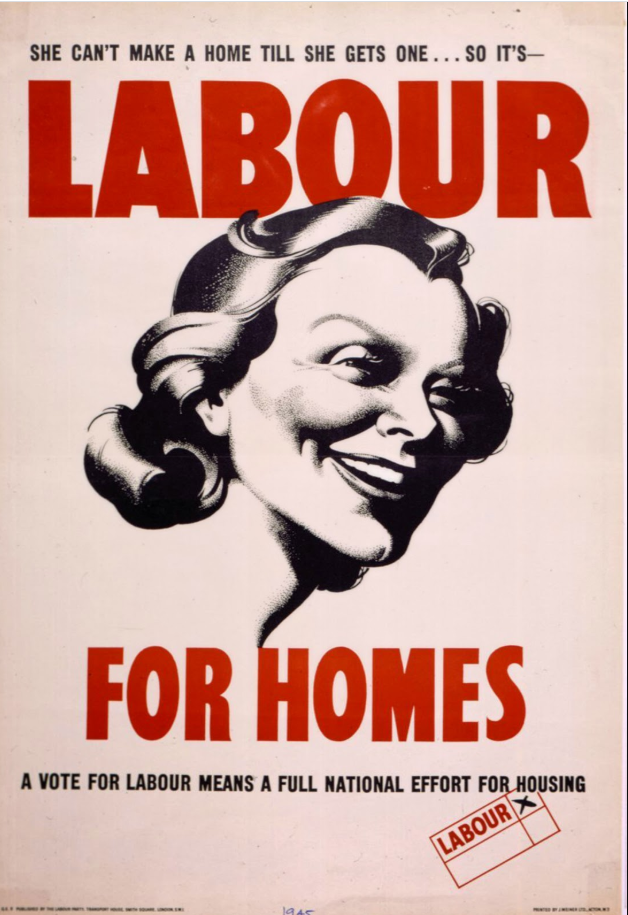With a few exceptions, the period of 22 May to 4 July 2024 was possibly the most predictable election in recent history. After six weeks of campaigning, debates and gaffes, nothing really changed. There was no breakout moment, no shifting of the debate, and no risk that the result would be anything other than a Labour landslide.
For housing campaigners, the lack of debate around the housing crisis will stand out as a missed opportunity. Before the election, housing advocates excitedly pointed to the increased salience of housing in polling, and its prominence in Labour’s 5 missions. But it hardly featured in the air war, the debates, or major policy announcements.
We can now look with hope to a Labour government poised to boost housing supply, improve quality of existing stock and reform problematic tenures like leasehold and private rent. But we should also ask: why was housing so absent from the election campaign; does this matter; and how can campaigners ensure that it is at the heart of the political discussion?
Multi-party consensus
Many pundits (including this one) pointed to housing as a dividing line at this election. The Conservatives had poignant housing failures around the Renters’ Reform Bill’s collapse and housing targets. Meanwhile, housing was at the centre of Labour’s policy offer, with the pledge to build 1.5 million homes, reform the private rental sector, and improve quality.
But the parties’ manifestos showed a relative consensus on housing policy. All agreed that housing supply needed to be sped up, with a focus on brownfield regeneration. All agreed on introducing some planning reform, with popular-sounding buzzwords to soften its potential risk. All agreed that reform of the private sector was needed. And all agreed that there was room for more social housing in the mix.
Meanwhile, more radical provisions such as rent regulation, ending the Right to Buy, or rebalancing the existing home ownership model, were off the table, meaning that there was little room for scare tactics.
What few dividing lines existed were either technical or risky. The Conservatives laid out their “cast-iron commitment to protect the Green Belt”, and while this was raised on the occasional front page it was never a fight which Labour sought. And few are qualified to, for instance, authoritatively debate the differences between Labour and the Conservatives’ leasehold policies.
The tightrope to a majority
One thing that has become clear since the election is how close things were in so many seats. While Labour’s majority is historic, it is built on precarious electoral foundations.
In housing terms, this was a tactical sacrifice of tens of thousands of votes in urban, renter-heavy seats, in exchange for those of suburban or rural, predominantly homeowner votes.
More so than in 2019 Labour’s electoral coalition contains a mix of those who are at the sharpest end of the housing crisis, and those who might worry that they would lose out from the change that is needed to solve it.
The parliamentary majority won at this election will make enacting this change easier, but making this a dividing line would have risked that majority. Labour’s ‘Ming vase’ strategy has successfully delivered dozens of MPs in previously safe Conservative seats like Hitchin and Gloucester, and talking more about planning reform or private rental reform might have lost a fair number of MPs who can now champion a wide range of progressive causes, including in housing.
This was particularly difficult in the tax-and-spend debate. So much of the election debate concerned the risk of future taxation from a Labour government, and so, while investing in skills, quality improvements, and unlocking developments may well ‘pay for themselves’ in the long run, any discussion of the amounts of spending involved would have led to further concerns of how to pay for this.
Linking the issues
Issues like the cost-of-living crisis and the state of the economy have been at the top of the political agenda at this election, but advocates failed to effectively link this to the high cost and low quality of housing.
In part, this is a symptom of the multiple crises going on in housing at the same time. The private renter locked out of home ownership and the historic resident of a dilapidated social housing block are suffering from different, albeit linked, policy failures.
During a an election campaign, it was easier to speak of how delivering GB Energy could result in cheaper and greener power, than to explain to voters how reforming a tenure they weren’t living in, or building homes they couldn’t afford, would benefit their lives.
The real campaign is just starting
Does it matter that this was not a ‘housing election’? High salience debates often lead to polarising and extreme answers, particularly in two-party systems like the UK. And in housing, where so much is decided by the markets and private business, such populist answers can be particularly dangerous.
Whatever the state of the debate, Labour comes into office with a mandate to enact transformational change. Already planning reform is being mentioned as a priority for the first 100 days, and much more may follow soon.
Now is the time of lowest risk and greatest opportunity. Debates about the scale of the solutions needed to end the various housing crises can be had without the risk of being turned into an attack line. And new MPs are more aware than ever of how tight their majorities are and the need to deliver for their constituents.
The task of advocates is now to drive the discussion with the hundreds of new MPs, many of whom care deeply about the housing crisis. Campaigners need to get better at demonstrating that the root causes of the housing crises, particularly the overall housing shortage, affect everyone regardless of tenure or security.
By showing how certain reforms will help new MPs’ constituents, particularly those in marginal seats, campaigners can build a coalition for change in between elections.
This election may not have been a turning point in the debate. But, for housing advocates, the real campaign has just begun.


